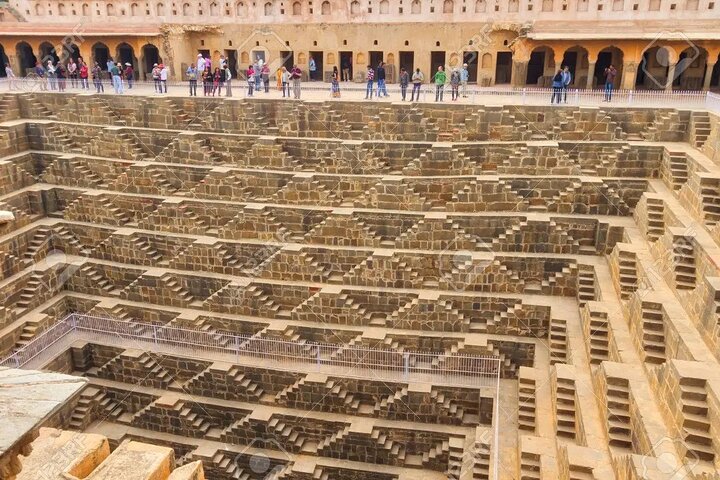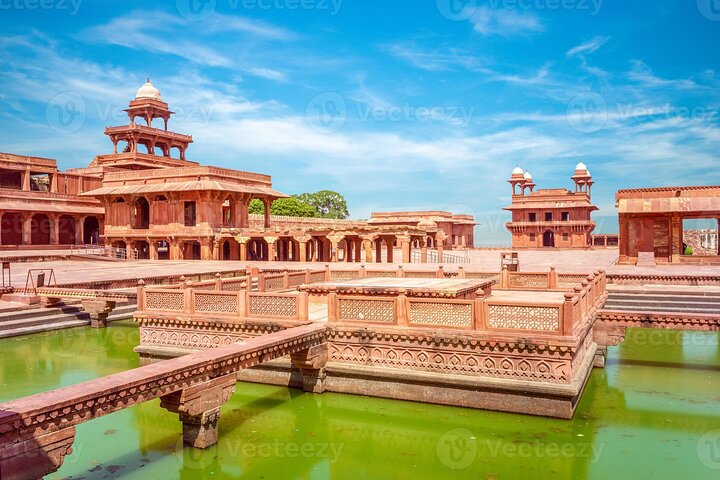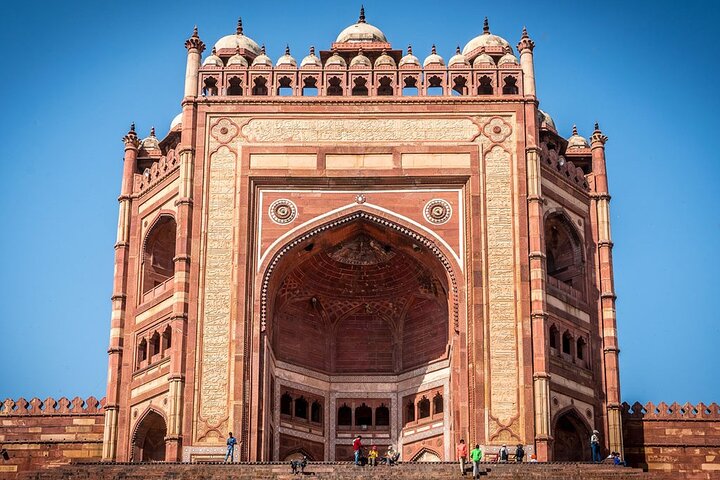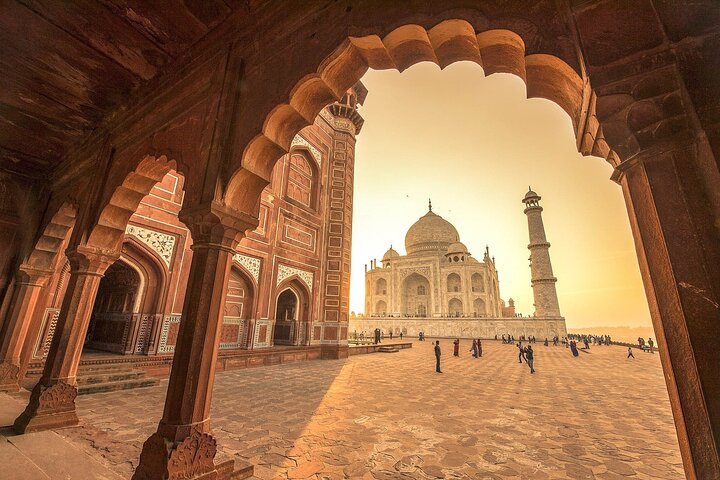Skip The Line :Guided 4 Days Delhi, Agra, Jaipur Tour With 5 Star Hotels
Share this tour

Offered languages
- English
- Italian
- French
- Spanish
Explore the Most Beautiful Sites of India on this Tour, this Tour is best for those who are running short on time or want to spend a great weekend at the most beautiful Place of India. Your Private Vehicle & Driver in an AC Vehicle with a dedicated Guide will ensure you don't miss anything. Visit the World's UNESCO heritage Sites on this are definitely worth doing.
A) 4 Days private Tour organised only for you & your Group.
B) Cities covered are: New Delhi, Agra & Jaipur
C) Dedicated AC Vehicle & Driver.
D) Professional Tour Guide in each City.
E) Pick Up from Any Hotel/ Resort/ Airport in New Delhi
F) Pick Up can also be arranged from Agra/Jaipur on the request.
G) Drop Off can be done at Jaipur, Agra or New Delhi on the request.
H) All Fuel Charges, Vehicle & Driver Charges are included in the price.
I) One Traditional Dinner with an Indian Family in Jaipur.
J) Complimentary Water Bottle each Day on Tour.
K) 3 Nights Accommodation in 5 Star Hotels
What's Included
Breakfast
Meeting and pickup
We Pick up the Guests from Any Hotel/ Resort/ Airport/ Railway Station in New Delhi, Gurugram and Noida !!
Itinerary
-
1Qutub Minar
Qutab Minar is a soaring, 73 m-high tower of victory, built in 1193 by Qutab-ud-din Aibak immediately after the defeat of Delhi's last Hindu kingdom. The tower has five distinct storeys, each marked by a projecting balcony and tapers from a 15 m diameter at the base to just 2.5 m at the top. The first three storeys are made of red sandstone; the fourth and fifth storeys are of marble and sandstone.
1 hour • Admission ticket not included -
2Red Fort
The Red sandstone walls of the massive Red Fort (Lal Qila) rise 33-m above the clamour of Old Delhi as a reminder of the magnificent power and pomp of the Mughal emperors. The walls, built in 1638, were designed to keep out invaders, now they mainly keep out the noise and confusion of the city
1 hour • Admission ticket not included -
3Lotus Temple
his temple is built in the shape of a lotus flower and is the last of seven Major Bahai's temples built around the world. Completed in1986 it is set among the lush green landscaped gardens. The structure is made up of pure white marble The architect Furiburz Sabha chose the lotus as the symbol common to Hinduism, Buddhism, Bhai Temple, Jainism and Islam. Adherents of any faith are free to visit the temple and pray or meditate.
1 hour • Admission ticket not included -
4India Gate
At the centre of New Delhi stands the 42 m high India Gate, an "Arc-de-Triomphe" like archway in the middle of a crossroad. Almost similar to its French counterpart, it commemorates the 70,000 Indian soldiers who lost their lives fighting for the British Army during the World War I. The memorial bears the names of more than 13,516 British and Indian soldiers killed in the Northwestern Frontier in the Afghan war of 1919.
15 minutes • Admission ticket not included -
5Parliament House
The Parliament house is a cirular colonnaded building . It also houses ministerial offices,numerous committee rooms and an excellent library as well. Conceived in the Imperial Style, the Parliament House consists of an open verandah with 144 columns.
Admission ticket free -
6Rashtrapati Bhavan
Rashtrapati Bhavan, home to the President of the world’s largest democracy, is emblematic of Indian democracy and its secular, plural and inclusive traditions. It was designed by Sir Edwin Lutyens and Herbert Baker and stands on a 330 acre estate.
Admission ticket free -
7Taj Mahal
An immense mausoleum of white marble, built in Agra between 1631 and 1648 by order of the Mughal emperor Shah Jahan in memory of his favourite wife, the Taj Mahal is the jewel of Muslim art in India and one of the universally admired masterpieces of the world's heritage. Also known as the Seventh Wonder of the World !!
1 hour 30 minutes • Admission ticket not included -
8Agra Fort
Agra Fort was built in the year 1573 under the reign of Akbar – one of the greatest Mughal Emperors. It took more than 4000 workers and eight years of hardship to complete the fort. Knowing the significance of its location, Akbar built the fort to make it the main residence of the Mughals. The fort remained as the main residence of the emperors belonging to the Mughal dynasty until the year 1638.
30 minutes • Admission ticket not included -
9Amber Palace
Amer Fort is a fort located in Amer, Rajasthan, India. Amer is a town with an area of 4 square kilometres located 11 kilometres from Jaipur, the capital of Rajasthan. Located high on a hill, it is the principal tourist attraction in Jaipur
1 hour 30 minutes • Admission ticket not included -
10
Jal Mahal is a palace in the middle of the Man Sagar Lake in Jaipur city, the capital of the state of Rajasthan, India. The palace and the lake around it were renovated and enlarged in the 18th century by Maharaja Jai Singh II of Amber
10 minutes • Admission ticket free -
11City Palace of Jaipur
The City Palace, Jaipur was established at the same time as the city of Jaipur, by Maharaja Sawai Jai Singh II, who moved his court to Jaipur from Amber, in 1727.The most prominent and most visited structures in the complex are the Chandra Mahal, Mubarak Mahal, Shri Govind Dev Temple, and the City Palace Museum.
1 hour • Admission ticket not included -
12Jantar Mantar - Jaipur
The Jantar Mantar is a collection of nineteen architectural astronomical instruments built by the Kachwaha Rajput king Sawai Jai Singh II, the founder of Jaipur, Rajasthan. The monument was completed in 1734. It features the world's largest stone sundial, and is a UNESCO World Heritage site
40 minutes • Admission ticket not included -
13Hawa Mahal - Palace of Wind
Hawa Mahal is a palace in Jaipur, India. Made with the red and pink sandstone, the palace sits on the edge of the City Palace, Jaipur, and extends to the Zenana, or women's chambers. The structure was built in 1799 by Maharaja Sawai Pratap Singh, the grandson of Maharaja Sawai Jai Singh, who was the founder of Jaipur.
10 minutes • Admission ticket not included -
14
Thank you for choosing Unseen India !!
Admission ticket free
New Delhi To Agra (250 Kms/ 5 Hrs) ( Pick Up can be arranged from Hotel, Airport, Station in New Delhi, Nodia, Gurugram)
Agra Tour Then To Jaipur (250 Kms/ 5 Hrs)
Guided Jaipur City Tour
Jaipur To New Delhi(250 Kms/ 5 Hrs) (Drop Only)
Additional info
- Infants are required to sit on an adult’s lap
- Public transportation options are available nearby
- Suitable for all physical fitness levels
- This is a private tour/activity. Only your group will participate
- There will be mandatory supplement for Gala Dinner on 24th December and 31st December night in Hotel and payable directly at the Hotel.
- Hotel rooms have either a double bed fit for 2 people. Please contact local tour operator after to request bed type; contact info will be provided on your confirmation voucher. If you are traveling with an odd number of individuals, an additional bed will be placed in one room.
Tags
Cancellation Policy
If you cancel at least 6 full day(s) before the scheduled departure time, you will receive a full refund.
If you cancel between 2 and 6 day(s) before the scheduled departure time, you will receive a 50% refund.
If you cancel within 2 day(s) of the scheduled departure, you will receive a 0% refund.
Show more
Cancellation Policy
- For a full refund, you must cancel at least 6 full days before the experience’s start time.
- For a 50% refund, you must cancel 2–6 full days before the experience’s start time.
- If you cancel less than 2 full days before the experience’s start time, the amount you paid will not be refunded.
Your guide to the flawless travel experience
















